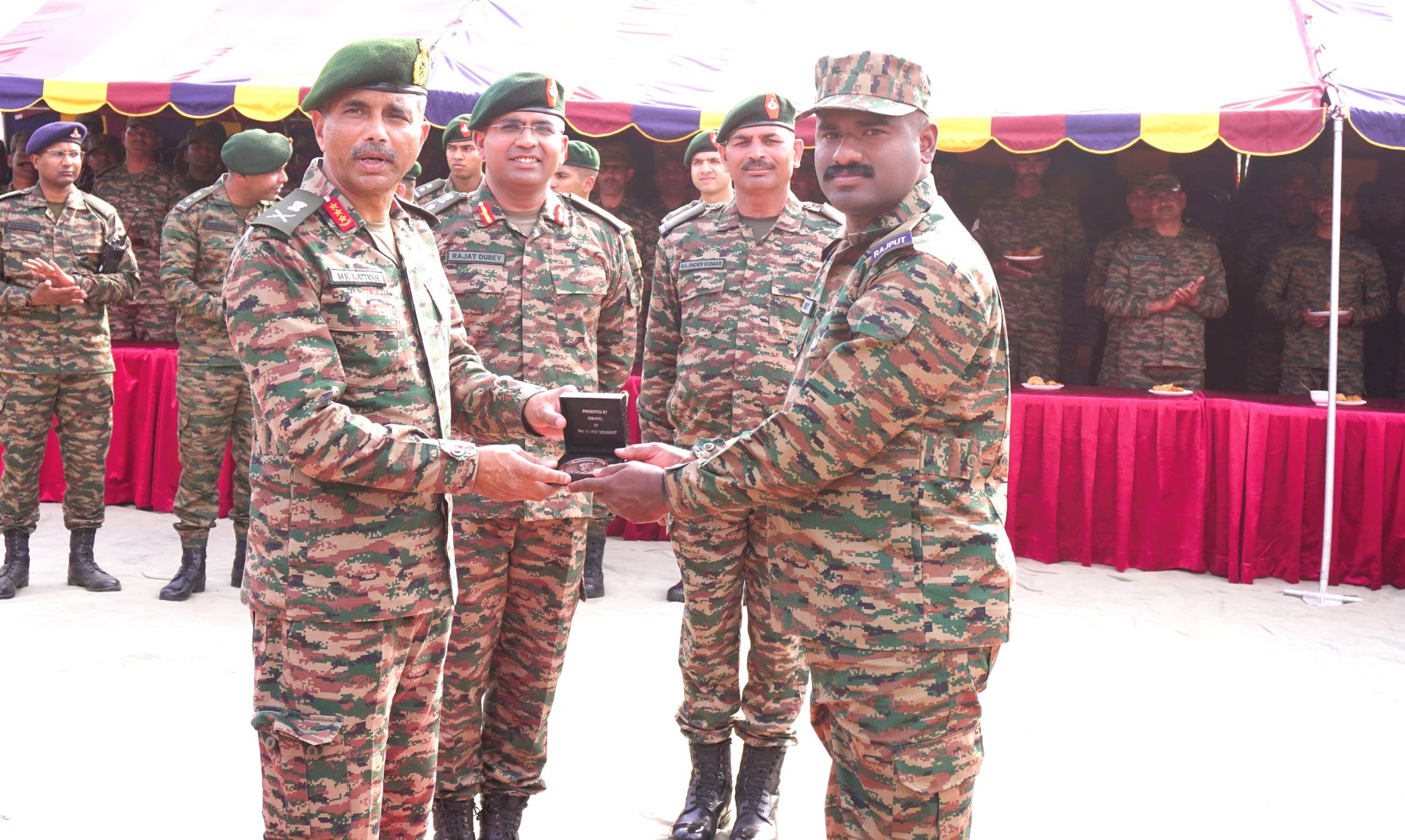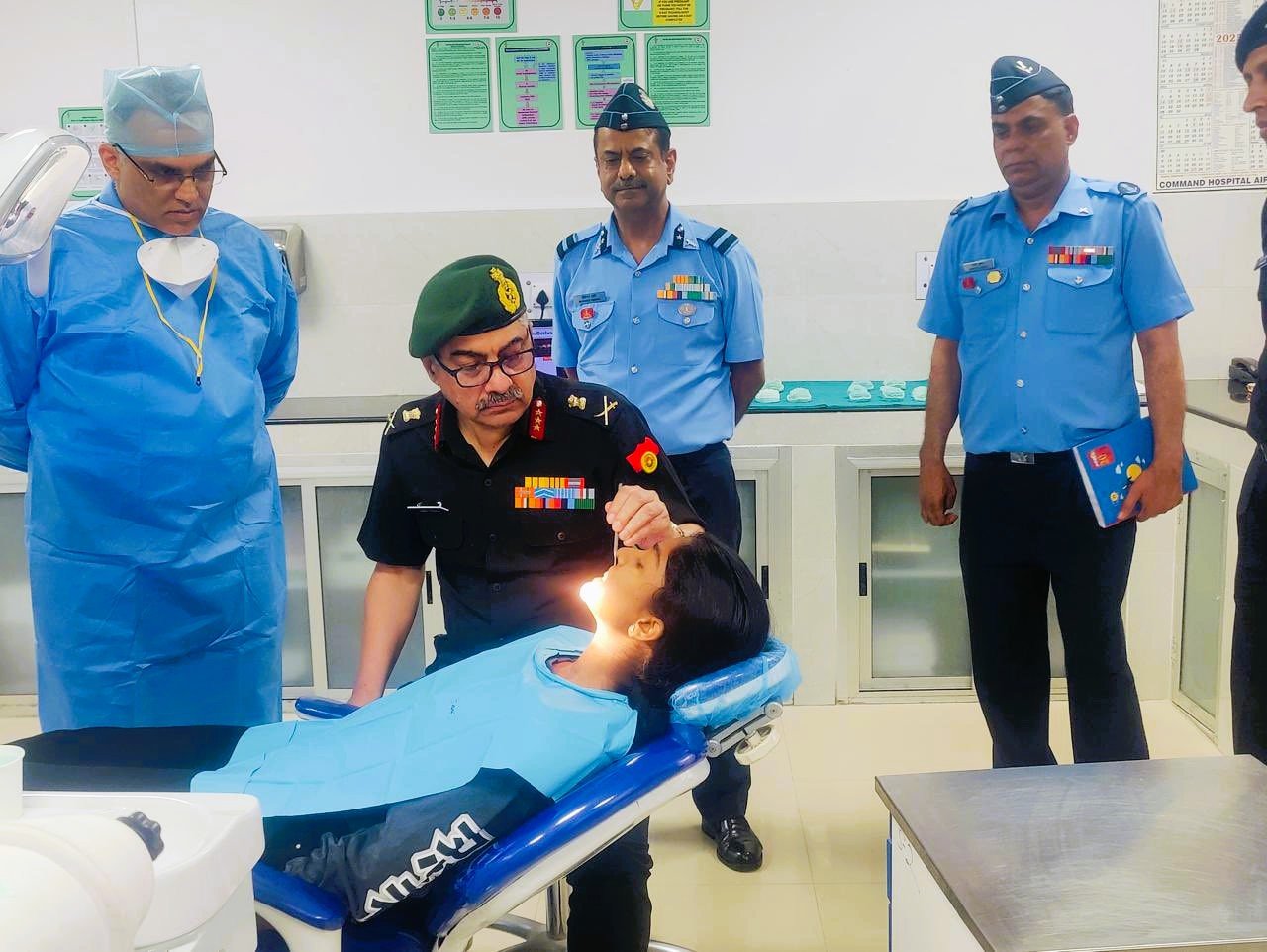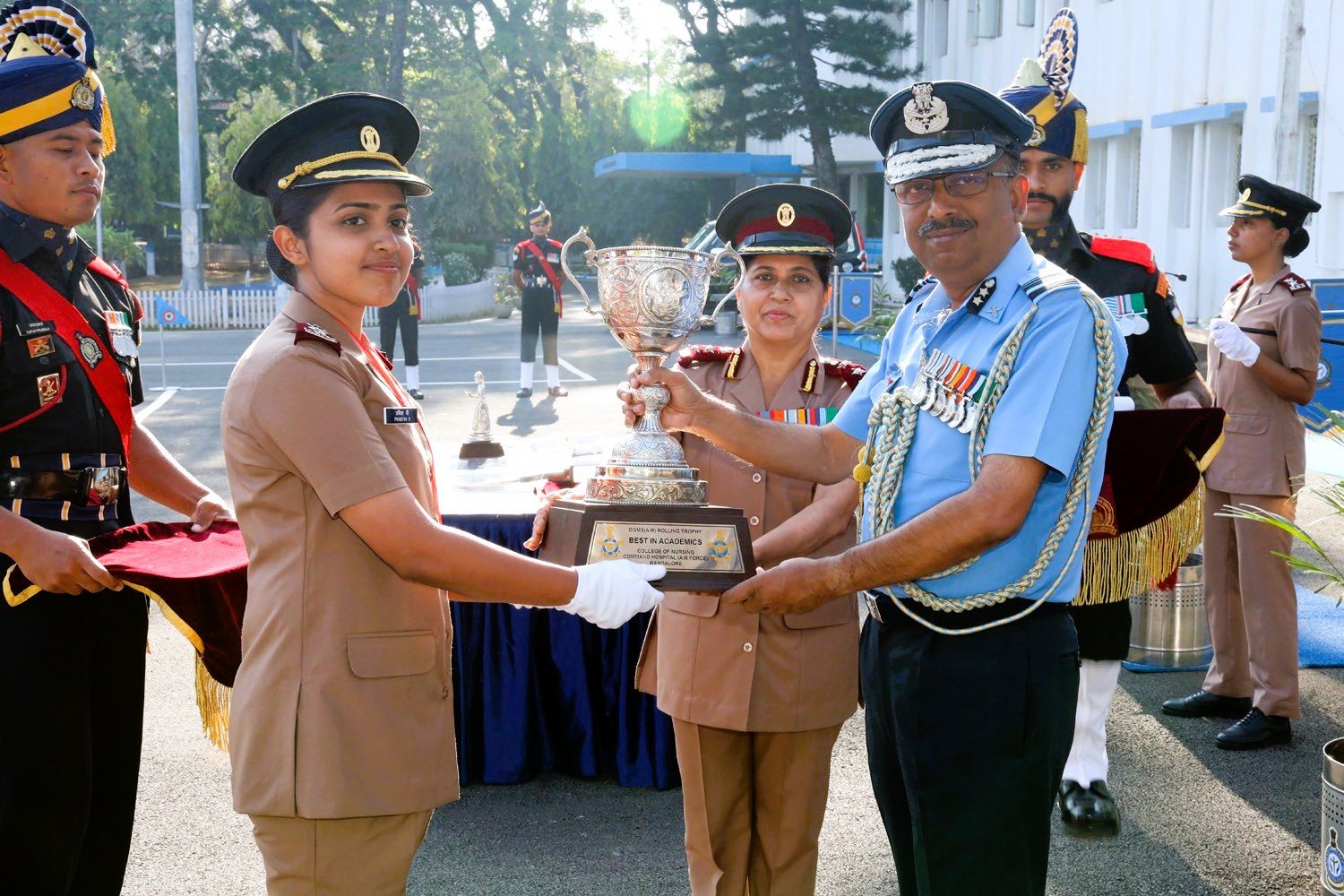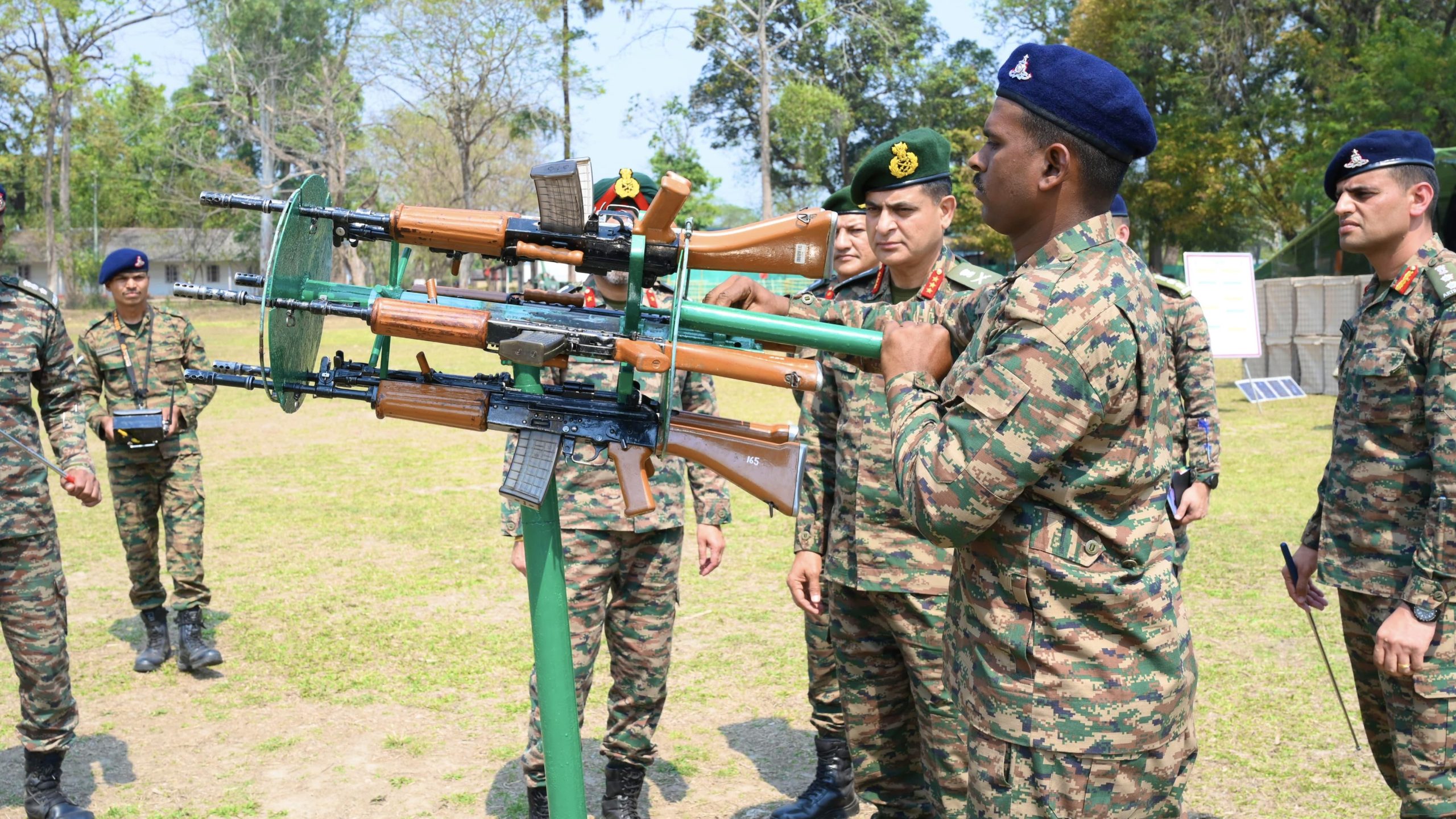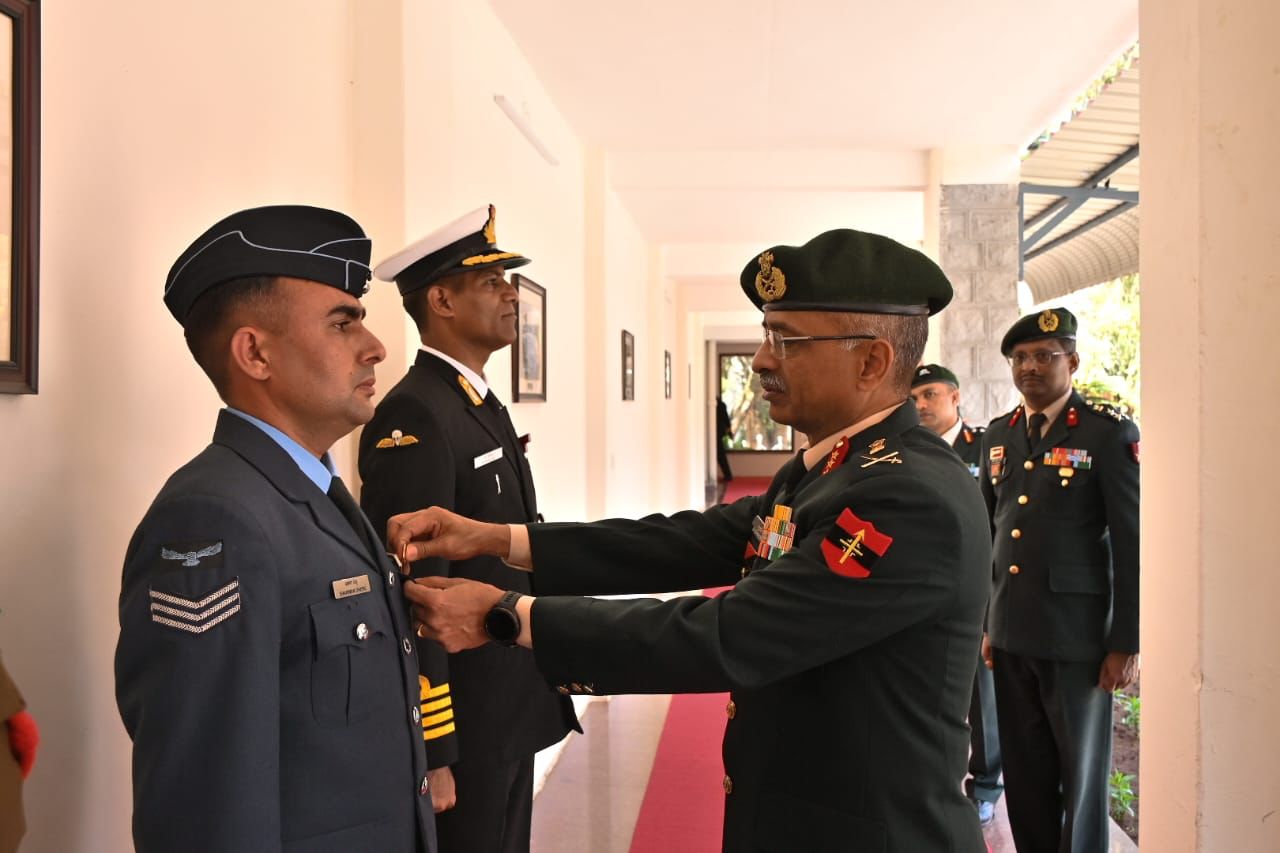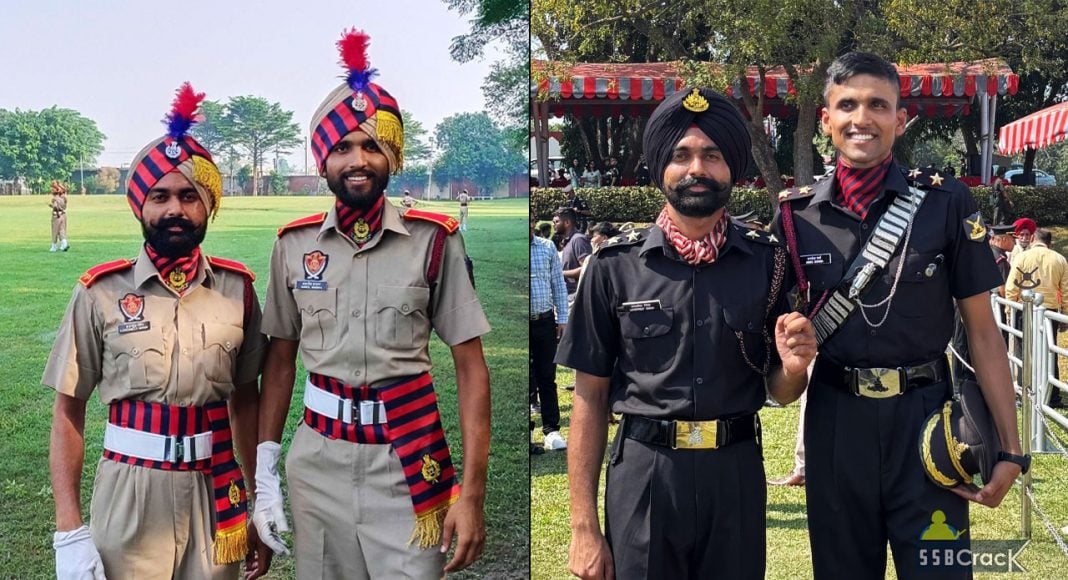Lt Gen Manoj Kumar Katiyar Reviews Pine and Charging Ram Divisions
Lieutenant General Manoj Kumar Katiyar, PVSM, AVSM, General Officer Commanding-in-Chief of the Western Command, recently conducted comprehensive visits to the…
Lt Gen Vineet Sharma Visits Bengaluru’s Premier Military Dental Institutions
Lieutenant General Vineet Sharma, AVSM, VSM, Director General Dental Services (DGDS) and Colonel Commandant of the Army Dental Corps, conducted…
39 Nursing Cadets Commissioned as Officers in Military Nursing Service at Command Hospital Air Force Bengaluru
In a moment of pride and accomplishment, 39 nursing cadets successfully graduated from the College of Nursing at Command Hospital…
GOC Gajraj Corps Reviews Operational Preparedness of Red Horns Gunners
The General Officer Commanding (GOC) of Gajraj Corps recently conducted a comprehensive review of the operational preparedness of the Red…
Lt Gen MV Suchindra Kumar Delivers Lecture at Defence Services Staff College Wellington
Lieutenant General MV Suchindra Kumar, General Officer Commanding-in-Chief of the Northern Command, recently delivered an insightful lecture on "Operational Dynamics…
From Punjab Police to Indian Army: The Inspiring Journey of Lt. Lovepreet Singh and Lt. Anmol Sharma
The path to greatness is often paved with hardships, failures, and relentless determination. The story of Lt. Lovepreet Singh and…

